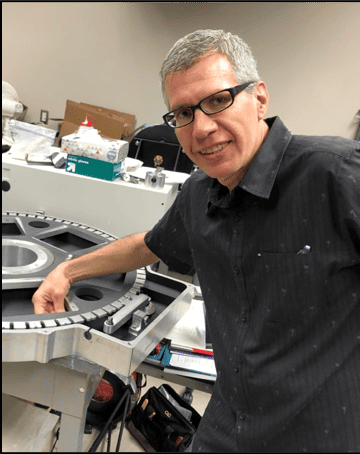
David Bennett is from Salt Lake City and moved to Hilo with his wife in 2012. Dave attended Southern Utah University as a Mathematics major/Art minor and the University of Hawaii at Hilo as an Astronomy major where he had the opportunity to travel to Namibia to be the Resident Astronomer for the Sossusvlei Desert Lodge in 2016. He is currently pursuing an Associate in Applied Science degree through the Electronics Technology program at the Hawaii Community College and is also preparing for the Cisco CCNA Certification exams. After graduation, Dave intends to pursue a career as a technician or an operator at one of the Mauna Kea Observatories. He has been an amateur astronomer since he was 15 and built his first telescope for the 1986 apparition of Halley’s Comet. In his spare time, Dave enjoys camping, hiking, playing with his dog Hokulea, reading science fiction, and editing videos for his wife Kea’s dance performances at UH Hilo.
Home Island: Big Island
Institution when accepted: Hawaii Community College
Akamai Project: Upgrading the Control Electronics of the UHWFI Filter Wheel
Project Site: Institute for Astronomy – Hilo, Hawai’i Island HI
Mentors: Luke McKay & Mark Chun
Collaborators: Robert Calder
Project Abstract:
The University of Hawaii 2.2-meter Telescope (UH88) has long been a leader in the implementation of large-format imaging arrays. In line with that legacy, a new STA 10 K CCD camera was commissioned under a NASA grant to aid in the UH Near-Earth Object (NEO) Follow-Up program. The new camera will improve readout time and the field-of-view will be nearly four times that of the current detector. Because of the large 95 x 95 mm size of the STA CCD array, the smaller optical filters utilized by the current camera would vignette the incoming light to the detector. Therefore, large-format filters and an accompanying filter wheel will need to be incorporated into the telescope. We will achieve this by utilizing an existing filter wheel housing from the University of Hawaii Wide-Field Imager (UHWFI) project. The filter wheel can accommodate up to six 165 mm square filters and is driven by a Geneva drive with a spring-loaded detent. Upgrading the control electronics of the UHWFI filter wheel housing in preparation for the STA camera installation is the primary focus of my project. Hall-effect sensors are used to verify the position of the filter wheel by sensing small magnets embedded in the wheel at each filter location. I replaced the original analog Hall-effect sensors with linear output Hall-effect sensor IC’s (Integrated Circuits) to avoid needing a precision power supply and separate analog-to-digital converter (ADC). I designed an aluminum bracket to hold a new circuit board containing the sensors and associated electronics at a precise position along the filter wheel path. An Arduino-compatible Mechaduino stepper motor control board was attached to a stepper motor to rotate the filter wheel into position. I then wrote an Arduino program to both control the stepper motor as it turns the filter wheel and to read the Hall-effect sensors as they verify the position of the filter wheel. Integrating the STA camera with the upgraded UHWFI filter wheel controls will not only expedite object acquisition for the UH NEO Follow-Up program, but also aid in the planned transformation of the UH88 observatory from a classical/visitor observing mode to a queued service observing mode in order to maximize scientific productivity.